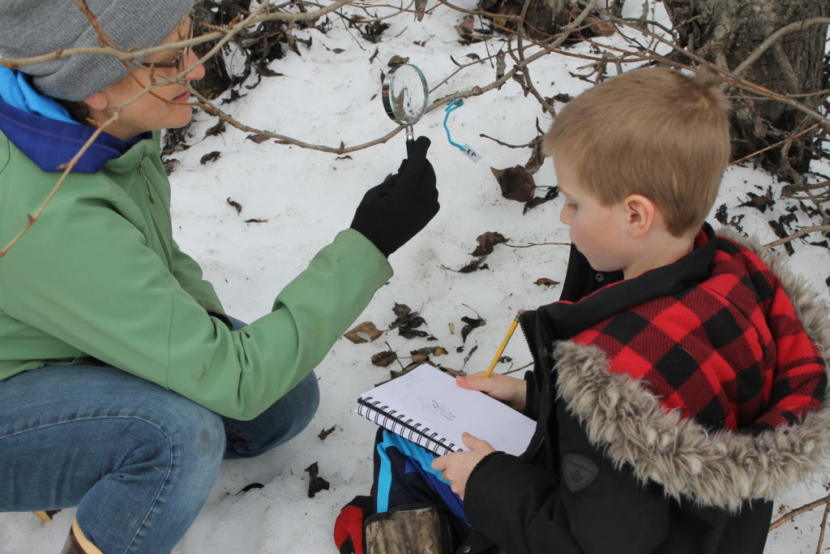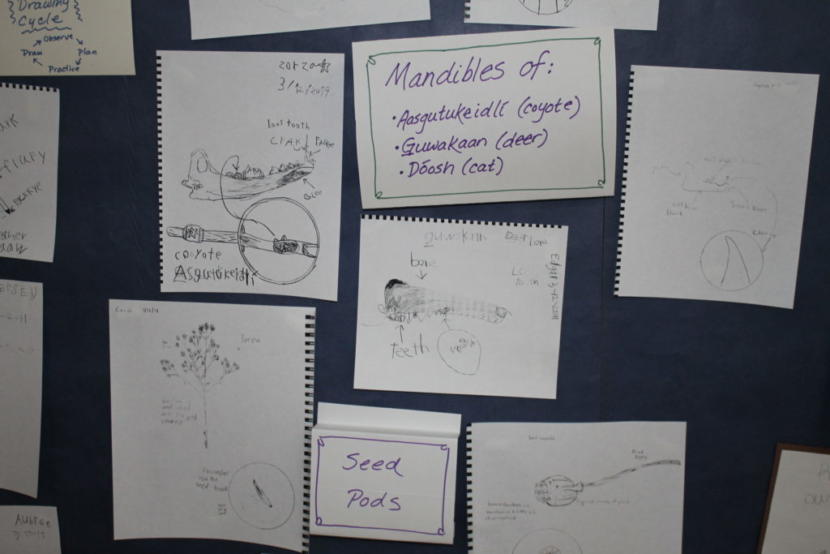
Last week the Klukwan School hosted artist Kathy Hocker for a series of lessons about scientific sketches and illustrations. Hocker is part of the state’s Artists in Schools program, which brings professional artists into schools to share their craft with students.
Kathy Hocker is a science illustrator. She creates detailed images that pick apart the intricacies of the flora and fauna of Southeast Alaska.
She spent a week working with students at the Klukwan School on observational drawing skills. Hocker says that scientific sketching is less about the final product than the process.
“When you’re sketching for yourself it can be messy,” Hocker says. “You don’t ever have to show it to anybody else. You may like it or not. But even if you don’t like it you’ve probably learned something in the process of doing it. I try to take a really low-pressure approach to sketching.”
Hocker worked with students on different techniques all week. Students learned how to keep a nature journal and draw magnified snapshots showing details that might normally go unnoticed. Hocker also offered a drop-in session after school for students and parents who wanted to hone their skills.
Armed with sketchbooks, pencils, and magnifying glasses, students step out into the melting snow to examine the first buds of spring.
Hocker has asked them to observe a bud, draw a magnified view of it and mark the branch with a tag.
The students take a long, hard look at those buds. They sketch the different shapes they see, list observations and make predictions about what the buds might look like in a few months.
Ocean Nash is a ninth-grade student at the Klukwan School.
He says Hocker helped him learn a useful trick for using drawings from his sketchbook as templates for colorful illustrations.
“You can sketch it in your sketchbook and then photocopy it and then you can flip it over and put graphite—like rub the whole space of the drawing—and then you can turn it over and then draw over the outline of the sketch in bold pencil and it’ll get transferred to the other page and you can go over it with pen,” Nash says. “It helps you transfer the sketch from your book to the nicer paper. It makes it a lot easier than just trying to redraw it.”
He says he likes to draw every once in a while, but his artwork isn’t exactly true to life.
Hocker hopes that the students finish the week having learned some skills that they can apply to their own interests.
“Maybe somebody realizes, ‘Oh, I could learn about something by drawing it. Well, I’m pretty interested in cars. I’m going to go draw cars and learn how they work.’ Or maybe somebody thinks, ‘Oh that technique I used to do that bird illustration, you know I’m not that into birds, but I would really like to do a fantasy painting of a dragon and now I have a technique to make that dragon look more lifelike.’”

